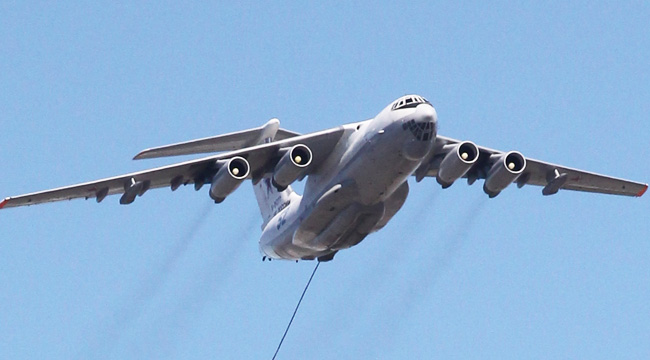
With the investigation into Trump-Russia ties receiving more updates every day — including sketchy Carter Page news and a Putin-linked think tank hatching a voter-fraud conspiracy — it’s also useful to remember that Russia’s not thrilled with President Trump lately. This is especially the case after CIA Director Mike Pompeo called Wikileaks a “hostile intelligence service abetted” by Russia, so it’s rather unsettling to see that this pushback may have resulted in Russian bombers taking an interest in the Alaskan coast.
Indeed, both CNN and Fox News are sounding slight alarms over this show of force, which has been taking place as close as 35 miles from U.S. shores. CNN reports that four such instances have occurred within four days; and a U.S. defense official confirmed that these sightings have included two Tu-95 Bear bombers (which are long-range and nuclear-capable) and two IL-38 maritime patrol aircraft (i.e., spy planes). The aircraft never actually left international airspace, but a NORAD spokesperson stated that, on Thursday, they dispatched U.S. and Canadian jets “to perform an intercept.”
Fox News echoes their rival’s report (independent of the ABC News report quoted above, which discusses proximity of the aircraft to Alaska) and notes that the U.S. Air Force hasn’t formally responded with a similar show of force:
In both incidents, the U.S. Air Force did not scramble any fighter jets or airborne warning planes (AWACS). The Russian jets in both incidents remained in international airspace. It was not immediately clear how close they came to mainland Alaska.
Russia now has flown bombers or spy planes near Alaska on four consecutive nights this week, the first time since President Trump took office that Russia has flown this close to the United States.
As of now, these aircraft are considered to pose no actual military threat, for the flights stayed within International airspace (per ABC), but — symbolically — did cross into the Air Defense Identification Zone (ADIZ) that the U.S. military maintains within a 200 nautical-mile range from the U.S. coast.
CNN relays word that U.S. officials are unequivocally interpreting this as “strategic messaging” from Russia. Indeed that’s the only conclusion that can be drawn while recalling that the most recent time this happened was in 2015 when Russian bombers flirted 40 miles off the Californian coast.
